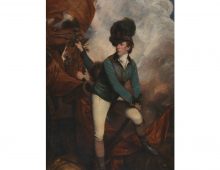Tagged with Transatlantic Slavery
Resource : Thomas Clarkson’s campaign chest
Between the 1500s and early 1800s, millions of Africans were kidnapped, sold and transported to the Americas to work as slaves, in unimaginably cruel conditions, on hugely profitable plantations, producing sugar, tobacco and other commodities. These plantations were largely owned by Europeans and Euro-Americans. Britain grew rich on the profits from this transatlantic slave trade, which were reinvested into other economic sectors. Only in the late eighteenth century did public opinion slowly begin to turn against the trade in Africans, and campaigners for abolition used every way they could to bring the issue to people’s attention in Europe.
Resource : Captured Africans
Kevin Dalton Johnson’s Captured Africans is a memorial to enslaved Africans transported on ships originating out of Lancaster as part of the Transatlantic slave trade. It stands on St George’s Quay in Lancaster and was unveiled in 2005.
Resource : Martha Washington Doll
Martha Washington was the first ‘First Lady’ of the USA. Although the term ‘First Lady’ was not introduced until much later, Martha Washington was known as ‘Lady Washington’, in recognition of her status as the wife of the USA’s first President, George Washington.
Resource : The interesting narrative of the life of Olaudah Equiano or Gustavus Vassa, the African
Olaudah Equiano was an African-born writer who documented his experiences of capture and enslavement, worked and travelled all over the British Atlantic world, and later became involved in the movement to abolish slavery. He was among the first and most effective black political activists within Britain’s African community. The recollections and arguments of people of African origin made a profound contribution to arguments for the abolition of the slave trade, adding urgency and authenticity to the work of fellow white campaigners.
Resource : Anti-slavery sugar bowl
Between the 1500s and early 1800s, millions of Africans were kidnapped, sold and transported to the Americas to work as slaves in unimaginably cruel conditions on hugely profitable plantations. These plantations were largely owned by Europeans and Euro-Americans. Britain grew rich on the profits from this transatlantic slave trade, reinvesting the profits in other economic sectors. Only in the late eighteenth century did public opinion slowly begin to turn against the trade in Africans, and campaigners for abolition used every way they could to bring the issue to people’s attention in Europe.
Resource : Challenging slavery: abolition and opposition
The campaign for the abolition of Transatlantic slavery, acts of resistance by those who were enslaved, and opposition from those who stood to benefit from the brutal trade in African people.
Resource : Bust of Jean-Jaques Dessalines (1758 – 1806)
Jean-Jacques Dessalines (1758 – 1806) was born into slavery in St Domingue (now Haiti) on the Caribbean island of Hispaniola. Following a mass uprising of enslaved people of African origin – the only successful slave revolt in history – and a series of bloody battles and reprisals, Dessalines eventually became the first ruler of Haiti, the world’s first modern independent ‘black’ republic. The events in St Domingue became known as the Haitian Revolution.
Resource : Roll Jordan Roll
Roll Jordon Roll is a spiritual, sung by enslaved Africans working on plantations in the Americas in the 1800s in resistance to their enslavement and cruel treatment.
Resource : Toussaint Louverture, Chief of the French Rebels in St Domingo
Toussaint Louverture (1743 – 1803) was born into slavery in St Domingue (now Haïti) on the Caribbean island of Hispaniola. In 1791 he led the first – and only – successful uprising of enslaved Africans. Although he died before the revolution spawned a nation, in 1804 Haiti became the first independent ‘black’ republic and contributed to the decline of the transatlantic slave trade. The events in St Domingue became known as the Haitian Revolution. This and other depictions of Louverture (in print and portraiture) reflected the high levels of fascination and respect expressed around the world for a radical figure who had refused to yield and who surmounted all foes in the revolutionary contests.


